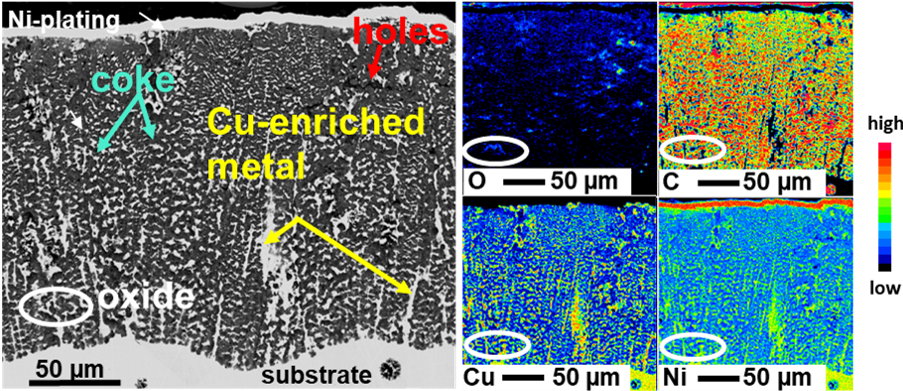K. Jahns, A.S. Ulrich, C. Schlereth, L. Reiff, U. Krupp, M.C. Galetz
Oxidation of Metals 96 (2021), 241-256, DOI: 10.1007/s11085-021-10037-8

Due to the inhibiting behavior of Cu, NiCu alloys represent an interesting candidate in carburizing atmospheres. However, manufacturing by conventional casting is limited. It is important to know whether the corrosion behavior of conventionally and additively manufactured parts differ. Samples of binary NiCu alloys and Monel Alloy 400 were generated by laser powder bed fusion (LPBF) and exposed to a carburizing atmosphere (20 vol% CO–20% H2–1% H2O–8% CO2–51% Ar) at 620 °C and 18 bar for 960 h. Powders and printed samples were investigated using several analytic techniques such as EPMA, SEM, and roughness measurement. Grinding of the material after building (P1200 grit surface finish) generally reduced the metal dusting attack. Comparing the different compositions, a much lower attack was found in the case of the binary model alloys, whereas the technical Monel Alloy 400 showed a four orders of magnitude higher mass loss during exposure despite its Cu content of more than 30 wt%.